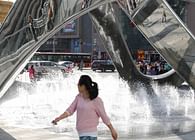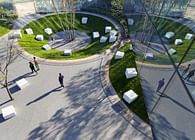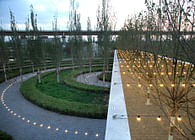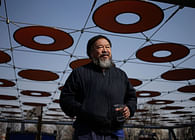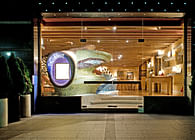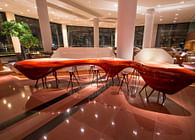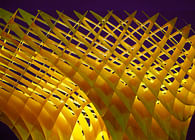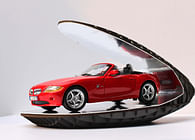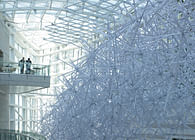
Beijing, CN
Check out the animation on BAM-TUBE (explains it ALL!)
https://www.youtube.com/watch?v=tEmEcPnmDBA
The form and organization of the monument and bridge were derived from an analysis of the human body. Many types of movements were initially studied, however considering the sites axial nature and connection to the waters edge, the analysis of swimming not only provides a variety of interesting formal options, but has the potential to connect more deeply to the site itself.
The butterfly stroke is divided into to 22 fundamental positions. As the body moves through water, different parts of the body move more or less than others, thus when these positions are looked at through time a pattern is revealed. This pattern then gives rise to formal possibilities which in are then rationalized into a structural system.
The final gesture of the Titan, reaching for the sun and into the future, is not just one symbolic gesture, but part of a lineage of movements and gestures which are revealed by the bridge. The bridge illustrates the past movements of the Titan and the monument itself is a powerful gesture ambitiously reaching for the impossible, and powerfully moving ahead into the future.
The Titan is approximately 100 meters high and cantilevers approximately 90 meters over a public square. To efficiently realize a cantilever of this nature a dual structural concept of a tied balanced cantilever with a fixed support at the Titan’s belly has been adopted. While the foundations of both the belly and the tail of the Titan are shared with the Bridge foundations the Titan itself is conceived to be a separate structure. The Titan is built up from a large reinforced concrete portal frame supporting a large steel space frame. This primary space frame in turn supports a secondary space frame that provides the detailed geometry of the Titan and contains the cladding fixing points.
The bridge consists of three spans of varying length. Combinations of splayed, tied arches provide vertical and lateral support to the bridge deck and provide a dynamic, dramatic and striking appearance. The arches are supported by the abutments and tied by the deck structure. In the first span the arches cross over at the third point of the span to increase the lateral stiffness and structural efficiency of the bridge. In the second and third spans, sets of secondary arches are introduced to improve the lateral behavior of the primary arches and assist in supporting the split twin deck structure.
The arches are envisaged to be fabricated from welded steel plates of varying thickness, with the cross section changing along the span in accordance with architectural intent and structural requirements.
The structural concept for the deck structure is a framework of steel H-sections edge beams and deck beams with diagonal bracing supporting a composite or precast concrete deck. The concept for the abutments is free form in situ reinforced concrete blocks on piled foundations. The shape of the abutments is not only dictated by architectural requirements to enhance the dynamic appearance of the bridge, but also to ensure a proper horizontal load transfer from the arches into the deck. The deck is suspended from the arches with pre-stressed steel cables at approximately 10 meters centers.
Status: Competition Entry
Location: Nanjing, CN
Firm Role: Architectural Design
Additional Credits: Arup - Structural Engineering
Crystal Graphics - Renderings
BIAD - Cost Estimating
